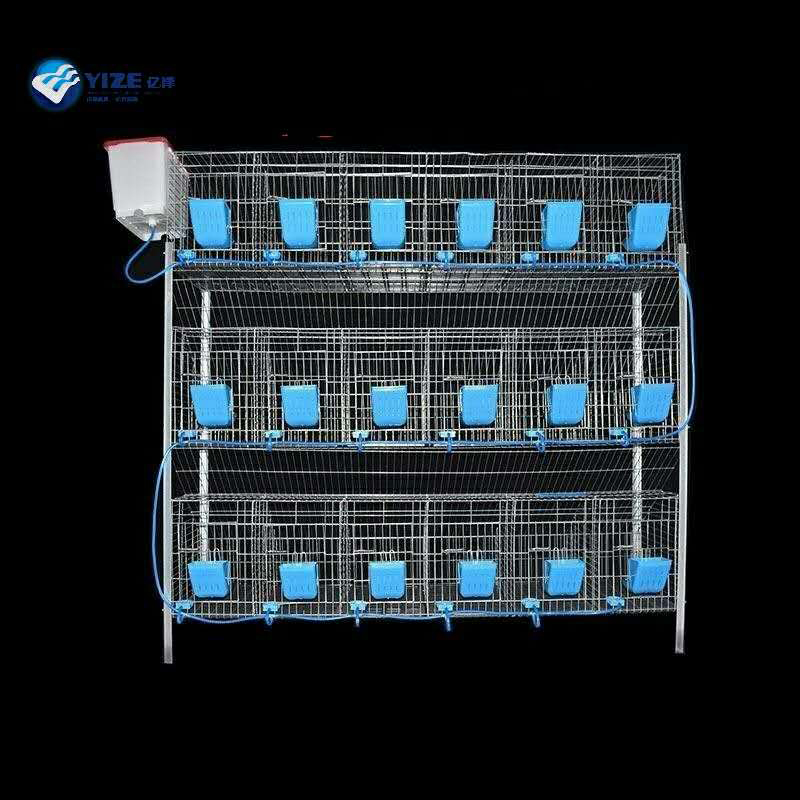Efficient Management Solutions for Commercial Chicken Layer Cages in Modern Poultry Farming
Nov . 25, 2024 00:07 Back to list
Efficient Management Solutions for Commercial Chicken Layer Cages in Modern Poultry Farming
The Evolution and Impact of Commercial Chicken Layer Cages
In the modern poultry industry, the demand for eggs has surged, leading to the proliferation of commercial chicken layer cages. These cages are designed to house hens specifically bred for egg production, providing a controlled environment aimed at maximizing efficiency and output. The movement towards commercial layer cages has been a focal point of discussions on animal welfare, sustainability, and the economics of poultry farming.
Design and Functionality of Layer Cages
Commercial chicken layer cages are typically constructed in a multi-tiered format, allowing for the housing of numerous hens in a relatively small footprint. This vertical design maximizes space while ensuring that hens have access to food and water. The cages are equipped with features such as slatted floors for easy waste management and automatic feeding systems, significantly reducing the labor required for everyday maintenance.
Each cage is designed to accommodate hens comfortably, considering their natural behavior relatively well. Though often criticized for restricting movement, layer cages are engineered to allow for some level of activity, such as nesting and perching opportunities. This balance between space and efficiency is crucial for producing the maximum number of eggs while attempting to adhere to animal welfare guidelines.
Economic Impact
The financial implications of using commercial chicken layer cages are profound. These systems allow poultry farmers to produce eggs at a lower cost per unit, resulting in affordable prices for consumers. Increased production capacity means that farms can meet the high demand for eggs, especially in regions where egg consumption is on the rise.
Moreover, by facilitating biosecurity measures and disease control, layer cages allow farms to minimize outbreaks that could devastate flocks. This aspect is particularly important in an industry that faces constant threats from diseases such as avian influenza. The ability to maintain a healthier environment for laying hens translates into fewer losses and increased profitability.
commercial chicken layer cage

Concerns and Controversies
Despite their economic benefits, commercial chicken layer cages have not been without controversy. Animal welfare advocates argue that confinement in cages prevents hens from exhibiting natural behaviors, leading to stress and health issues. The movement towards cage-free systems has gained momentum, with many consumers demanding eggs produced without the use of cages.
In response, some producers have begun transitioning to barn and free-range systems that allow hens more freedom to roam. However, these alternatives may come with higher production costs, which can influence egg prices. The challenge lies in finding a balance between meeting consumer demand for ethical farming practices and maintaining the economic viability of poultry operations.
Sustainability Considerations
The sustainability of commercial chicken layer cages is another critical area of discussion. While conventional systems have been critiqued for their impact on animal welfare, they often have a lower environmental footprint than some alternative methods. For example, barn-raised or free-range systems can require significantly more land and resources, potentially leading to higher greenhouse gas emissions.
Innovative practices, such as improved waste management and feeding strategies, are making strides in reducing the environmental impact of layer cages. Many producers are exploring ways to optimize feed conversion and utilize waste as fertilizer, thus enhancing sustainability.
Conclusion
Commercial chicken layer cages represent a significant evolution in the poultry industry. While they provide considerable economic benefits and efficiencies, they also raise important questions regarding animal welfare and sustainability. As consumer preferences evolve and technological advancements continue, the future of egg production may see a mix of systems designed to meet both ethical standards and production demands. The challenge will be to navigate these complexities while ensuring the well-being of hens and the viability of the poultry industry.
-
Automatic Feeding Line System-Pan Feeder Nipple Drinker|Anping County Yize Metal Products Co., Ltd.
NewsJul.29,2025
-
Hot Sale 24 & 18 Door Rabbit Cages - Premium Breeding Solutions
NewsJul.25,2025
-
Automatic Feeding Line System Pan Feeder Nipple Drinker - Anping County Yize Metal Products Co., Ltd.
NewsJul.21,2025
-
Automatic Feeding Line System Pan Feeder Nipple Drinker - Anping County Yize Metal Products Co., Ltd.
NewsJul.21,2025
-
Automatic Feeding Line System - Anping Yize | Precision & Nipple
NewsJul.21,2025
-
Automatic Feeding Line System - Anping Yize | Precision & Nipple
NewsJul.21,2025






